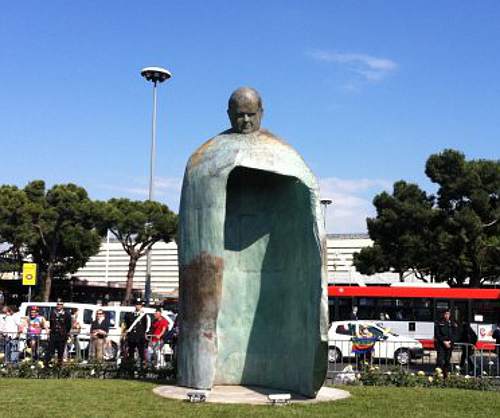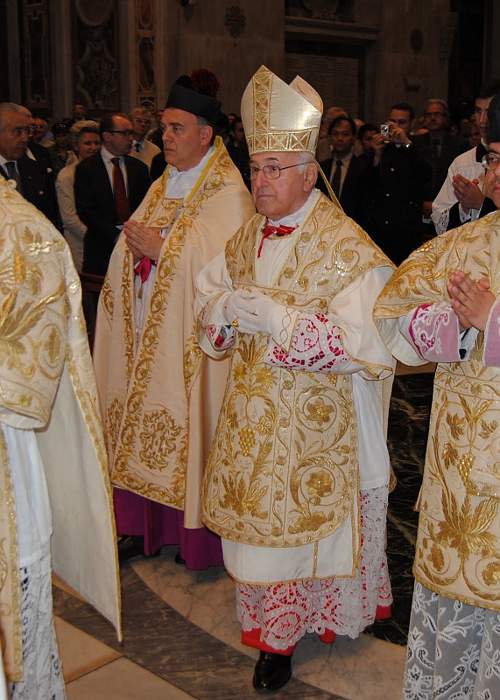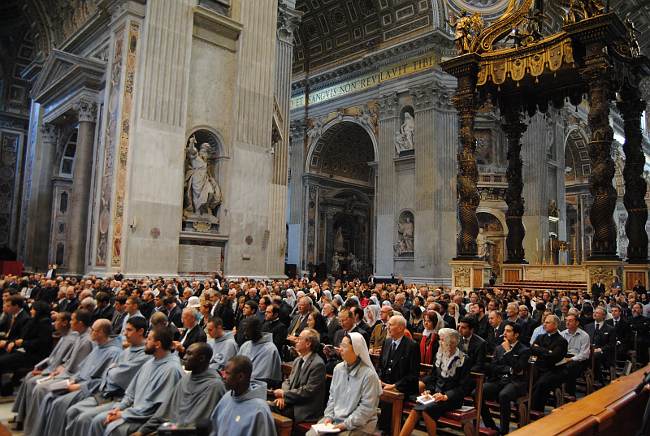Noen smakebiter fra dagens nye dokument fra Vatikanet – om hvordan pave Bendikts regler (fra 2007) for bruken av den tradisjonelle messen, skal forstås. (Her er dokumentet i pdf-fprmat.)
En gruppe (hvordan en slik gruppe skal defineres har vært svært grundig diskutert) som ber om den tradisjonelle messen defineres svært åpent – det er i realiteten enhver gruppe av troende:
«15. A coetus fidelium (“group of the faithful”) can be said to be stabiliter existens (“existing in a stable manner”), according to the sense of art. 5 § 1 of the Motu Proprio Summorum Pontificum, when it is constituted by some people of an individual parish who, even after the publication of the Motu Proprio, come together by reason of their veneration for the Liturgy in the Usus Antiquior, and who ask that it might be celebrated in the parish church or in an oratory or chapel; such a coetus (“group”) can also be composed of persons coming from different parishes or dioceses, who gather together in a specific parish church or in an oratory or chapel for this purpose.»
Hvis en prest sammen med noen troende ønsker å feire den tradisjonelle messen (utenfor prestens egen by og kirke, må man regne med), skal ha be å få låne en passende katolske kirke – og det skal skje uten problemer:
«16. In the case of a priest who presents himself occasionally in a parish church or an oratory with some faithful, and wishes to celebrate in the forma extraordinaria, as foreseen by articles 2 and 4 of the Motu Proprio Summorum Pontificum, the pastor or rector of the church, or the priest responsible, is to permit such a celebration, while respecting the schedule of liturgical celebrations in that same church.»
Hva slags krav stilles til (opplæring kreves av) en prest som skal feire den tradisjonelle messen? Det samme som for å feire den nye messen, egentlig:
«20. With respect to the question of the necessary requirements for a priest to be held idoneus (“qualified”) to celebrate in the forma extraordinaria, the following is hereby stated:
a. Every Catholic priest who is not impeded by Canon Law is to be considered idoneus (“qualified”) for the celebration of the Holy Mass in the forma extraordinaria.
b. Regarding the use of the Latin language, a basic knowledge is necessary, allowing the priest to pronounce the words correctly and understand their meaning.
c. Regarding knowledge of the execution of the Rite, priests are presumed to be qualified who present themselves spontaneously to celebrate the forma extraordinaria, and have celebrated it previously.»
Hvor mye skal man lære av latin og den tradisjonelle messen på presteseminarer? Her hadde noe ønsket at det skulle være skrevet enda tydeligere:
«21. Ordinaries are asked to offer their clergy the possibility of acquiring adequate preparation for celebrations in the forma extraordinaria. This applies also to Seminaries, where future priests should be given proper formation, including study of Latin and, where pastoral needs suggest it, the opportunity to learn the forma extraordinaria of the Roman Rite.»
Pkt 28 er litt vanskelig å forstå, kanskje, men jeg forstår at det sier at liturgiske regler som er blitt forandret etter 1962 – som tillatelsen til å motta kommunion i hånden, og til å bruke kvinnelige ministranter – ikke skal gjelde når man feirer den tradisjonelle messen:
«28. Furthermore, by virtue of its character of special law, within its own area, the Motu Proprio Summorum Pontificum derogates from those provisions of law, connected with the sacred Rites, promulgated from 1962 onwards and incompatible with the rubrics of the liturgical books in effect in 1962.»
Det blir sikkert mye interessant diskusjon rundt dette dokumentet de neste ukene – følg med.







 … Pope Benedict wasted no time in establishing the themes and the tone of the visit, right from the get-go. In Aquileia, the Holy Father’s first public remarks were at the Piazza del Capitolo outside the Basilica of Aquileia. Often these greetings are really just an exchange of official pleasantries, but this time, Pope Benedict praised the Church of Aquileia in a prose that waxed rhapsodic.
… Pope Benedict wasted no time in establishing the themes and the tone of the visit, right from the get-go. In Aquileia, the Holy Father’s first public remarks were at the Piazza del Capitolo outside the Basilica of Aquileia. Often these greetings are really just an exchange of official pleasantries, but this time, Pope Benedict praised the Church of Aquileia in a prose that waxed rhapsodic.